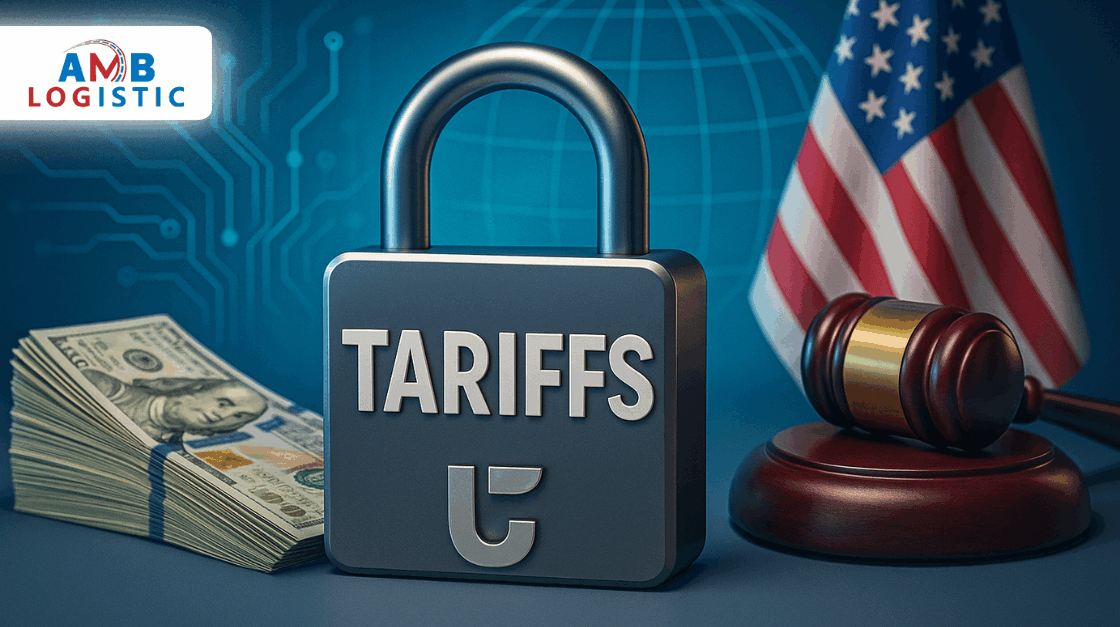
Starting August 1, 2025, the U.S. will implement augmented tariffs and stricter enforcement against Chinese goods rerouted through third countries like Vietnam, Indonesia, and Malaysia to bypass existing duties.
For shippers, brokers, and carriers, this isn’t just a policy update. It’s a seismic shift in trade compliance — one that could reshape freight flows and trigger capacity volatility in the weeks ahead.
Why This Move? The Transshipment Loophole
Over the past year, U.S. trade authorities uncovered massive spikes in Chinese-origin goods being shipped indirectly through neighboring countries to dodge tariffs.
- Example: Steel, solar panels, and electronics manufactured in China were being re-labeled as originating elsewhere.
- This evasion cost U.S. revenue and distorted fair trade.
The new rules aim to tighten origin verification and impose penalties on companies involved in circumvention.
What’s Changing in August 2025?
The upcoming enforcement measures include:
- Stricter Customs Verification
- Enhanced checks on rules of origin documents
- Expanded audits of supplier and carrier data
- Expanded Tariff Scope
- Duties applied to goods proven to contain significant Chinese content, even if transshipped
- Real-Time Trade Data Sharing
- U.S. Customs will deploy AI-powered risk analysis to detect routing anomalies
This crackdown means higher scrutiny at ports and potential shipment delays for non-compliant cargo.
Which Commodities Will Be Hit Hardest?
Expect disruptions in:
- Electronics & semiconductors
- Solar panels & renewable components
- Steel, aluminum, and industrial metals
- Textiles and consumer goods
These sectors have historically used transshipment routes to maintain cost competitiveness — now, their compliance burden will skyrocket.
What This Means for Shippers
For importers, the risks are immediate:
- Longer customs clearance times
- Potential penalties for incorrect origin declarations
- Higher landed costs due to tariff application
✅ How to Prepare
- Audit your supplier network: Ensure origin documentation is rock-solid.
- Increase visibility: Use tools that track true source of goods.
- Pre-clear cargo: Work with customs brokers early to avoid last-minute holdups.
- Diversify sourcing: Identify alternative suppliers outside high-risk lanes.
What Brokers and Carriers Must Know
Brokers should brace for more compliance workload:
- Validate shipper-provided origin documents
- Stay updated on tariff codes and enforcement patterns
- Prepare clients for possible rate and timing fluctuations
Carriers moving goods through flagged regions should expect:
- Extra inspections at U.S. ports
- Re-routing requests to avoid at-risk transshipment points
- Demand shifts toward direct-origin freight
Market Impact: Rate and Capacity Volatility Ahead?
When trade enforcement tightens, history tells us:
- Front-loading surges as shippers rush goods ahead of enforcement deadlines
- Capacity crunches at ports and warehouses
- Short-term spikes in spot rates, especially for compliant lanes
This August could see brief chaos, followed by a long-term rebalancing of trade routes.
AMB Logistic’s Strategy for Clients
At AMB Logistic, we’re proactively helping clients navigate this tariff storm by:
- Pre-vetting supply chains to identify at-risk shipments
- Working with trusted customs brokers for rapid compliance
- Advising shippers on routing strategies to avoid bottlenecks
- Using DAT iQ and trade intelligence to monitor lane volatility in real time
We turn regulatory complexity into actionable solutions.
The Bigger Picture: Supply Chain Resilience Is No Longer Optional
These tariff rules are part of a global trend:
- Governments are prioritizing domestic trade fairness
- Supply chains must be transparent and adaptable
- Data-driven compliance is the new competitive advantage
Businesses that react fast — and invest in visibility — will avoid penalties and even gain a market edge.
Final Word from AMB Logistic
The U.S. tariff crackdown isn’t just about enforcement — it’s a wake-up call.
Supply chains that rely on loopholes are at risk. Those built on compliance, trust, and proactive strategy will thrive.
At AMB Logistic, we help our partners move not just freight, but freight that’s future-proof.
📞 Worried about August tariffs?
We’ve got your back.
📧 info@amblogistic.us
🌐 www.amblogistic.us
📍 Troy, MI
Tags:
USTariffUpdate2025, TradeCompliance, FreightPolicyChange, AMBLogistic, CustomsStrategy, SmartFreight, SupplyChainResilience, DATPartner, ImporterGuidance, USChinaTrade, TariffImpact, LogisticsPlanning




